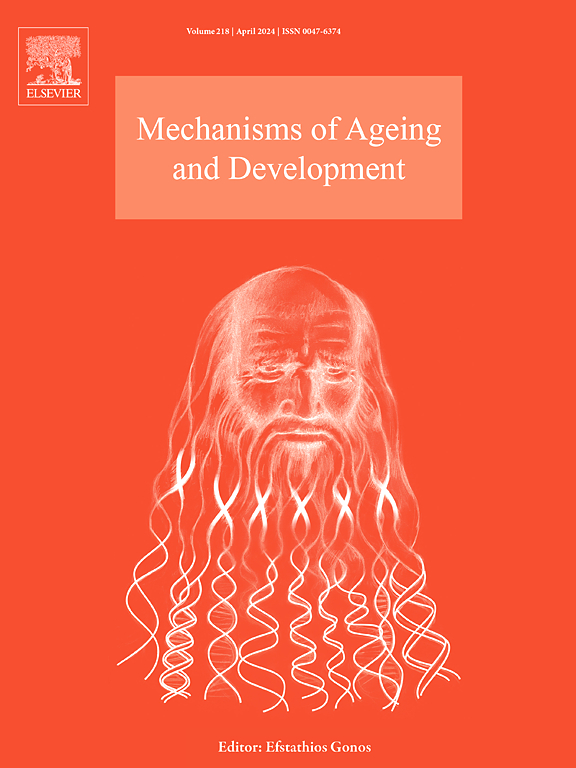Towards defining optimal concentrations of micronutrients in adults to optimize health
IF 5.1
3区 医学
Q2 CELL BIOLOGY
引用次数: 0
Abstract
Micronutrients are essential for maintaining physiological homeostasis and optimizing healthspan, defined as the years lived in good health without chronic diseases or disabilities. Despite increasing global life expectancy, improvements in healthspan have not kept pace, partly due to subclinical micronutrient deficiencies that often precede clinical symptoms. The triage theory highlights how micronutrient insufficiencies compromise long-term health by prioritizing critical metabolic functions. Micronutrients such as Vitamins B6, B9, B12, D, and K are particularly crucial to optimizing healthspan, by influencing energy metabolism, neurological health, immune regulation, and bone integrity. Traditional tools like Dietary Reference Intakes (DRIs) provide population-level guidelines but fail to account for individual factors such as genetics, lifestyle, and nutrient interactions. Quantitative assessment of micronutrient concentrations using biomarkers offers a more precise approach but faces challenges, including high costs and limited accessibility. National nutrition surveys demonstrate potential in addressing population-level deficiencies and form the basis for advancing precision supplementation strategies to improve health outcomes and extend healthspan by defining optimal micronutrient concentrations. Future efforts should aim to establish evidence-based thresholds for optimal micronutrient concentrations by integrating biomarker data with clinical outcomes, genetic profiles, and lifestyle factors, providing a framework to guide personalized and population-level supplementation strategies.
确定成人微量营养素的最佳浓度以优化健康
微量营养素对于维持生理稳态和优化健康寿命至关重要,健康寿命的定义是没有慢性疾病或残疾的良好健康生活年限。尽管全球预期寿命不断延长,但健康寿命的改善并没有跟上,部分原因是亚临床微量营养素缺乏往往先于临床症状。分诊理论强调了微量营养素缺乏如何通过优先考虑关键代谢功能来损害长期健康。微量营养素,如维生素B6、B9、B12、D和K,通过影响能量代谢、神经健康、免疫调节和骨骼完整性,对优化健康寿命尤其重要。像膳食参考摄入量(DRIs)这样的传统工具提供了人群水平的指导,但未能考虑到遗传、生活方式和营养相互作用等个人因素。使用生物标记物对微量营养素浓度进行定量评估提供了一种更精确的方法,但也面临着挑战,包括高成本和有限的可及性。国家营养调查显示了解决人口水平缺乏的潜力,并形成了推进精确补充战略的基础,通过确定最佳微量营养素浓度来改善健康结果和延长健康寿命。未来的努力应旨在通过将生物标志物数据与临床结果、遗传谱和生活方式因素相结合,建立基于证据的最佳微量营养素浓度阈值,为指导个性化和人群水平的补充策略提供框架。
本文章由计算机程序翻译,如有差异,请以英文原文为准。
求助全文
约1分钟内获得全文
求助全文
来源期刊
CiteScore
11.10
自引率
1.90%
发文量
79
审稿时长
32 days
期刊介绍:
Mechanisms of Ageing and Development is a multidisciplinary journal aimed at revealing the molecular, biochemical and biological mechanisms that underlie the processes of aging and development in various species as well as of age-associated diseases. Emphasis is placed on investigations that delineate the contribution of macromolecular damage and cytotoxicity, genetic programs, epigenetics and genetic instability, mitochondrial function, alterations of metabolism and innovative anti-aging approaches. For all of the mentioned studies it is necessary to address the underlying mechanisms.
Mechanisms of Ageing and Development publishes original research, review and mini-review articles. The journal also publishes Special Issues that focus on emerging research areas. Special issues may include all types of articles following peered review. Proposals should be sent directly to the Editor-in-Chief.

 求助内容:
求助内容: 应助结果提醒方式:
应助结果提醒方式:


